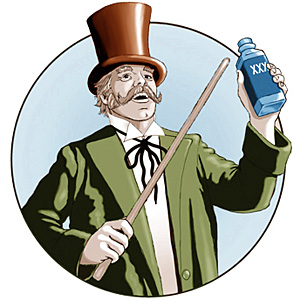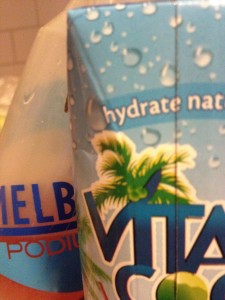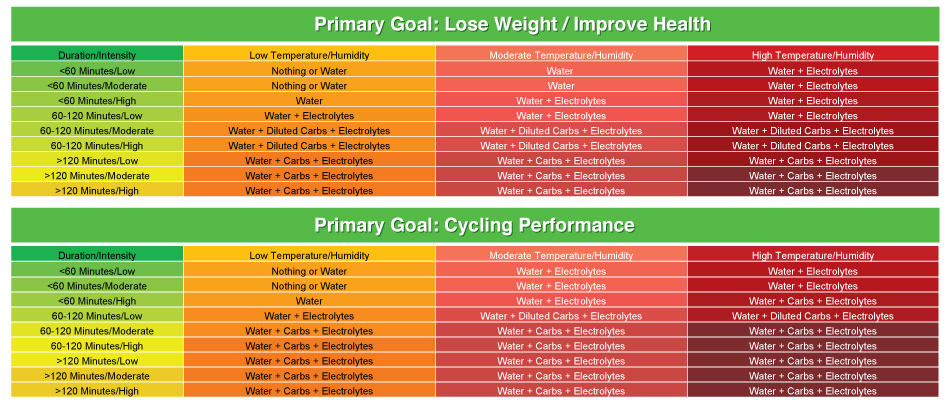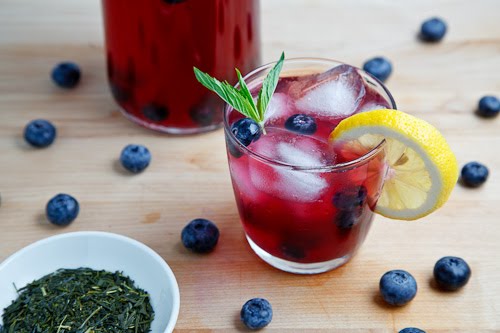Loving the BITE: Delicious Summer Hydrators
Whether on the bike, in the office, or working outside, hydration is crucial for the cyclist. It’s obvious why it’s so important when riding. But, do you realize that chronic day-to-day dehydration can also have a huge effect on your ride?
Dehydration can be the source of fatigue, headaches, digestive issues, and more. It also puts you into a hole going into your ride…one you’ll likely not crawl out of while riding.
This week, we have 5 great ways to keep you hydrated on and off the bike, and my Top 10 tips for riding in high heat and humidity.
Recipes of the Week: My Favorite Summer Hydrators
Flavored Ice-Water:
Of course, plain ol’ water is great for you and works well as a hydrator. But, you can also add benefits by adding fruits, spices, and herbs to it. My faves? Lemon + Mint, Strawberry + Basil, OR fresh Ginger chunks + Lime. Most fruit will add is a great source of vitamin C (the juice or the fruit), a powerful antioxidant, and it makes for a refreshing drink. You can step it up a notch for a pre-ride drink by adding raw agave or honey, and adding sodium (see Sodium Pre-Load).
Super Health Tonic:
Alright, I don’t expect you to drink this all the live-long day. It’s a tough one. It takes some motivation, and maybe even a plugged nose. But, a one-glass-per-day health tonic  regimen can certainly deliver less colds, less sinus problems, potential fat loss and all the plentiful benefits of raw apple cider vinegar.
regimen can certainly deliver less colds, less sinus problems, potential fat loss and all the plentiful benefits of raw apple cider vinegar.
Start the day with a mix of 16 oz. water, 1 Tbsp. raw apple cider vinegar, and optionally, 1 Tbsp. fresh grated ginger (1/4 tsp ground), 1/4 tsp. ground cinnamon, and 1 pinch cayenne pepper. It’s loaded with anti-inflammatories, antioxidants, and the magic of ACV – not convinced? Read all about it here.
Ginger Berry Green Tea:
The benefits of green tea are vast. They include super cell-protecting antioxidants, antibacterial properties, cholesterol plague reducers, nutrients that promote eye health, and even metabolism boosters and extra fat burn! To make a refreshing summer green tea, brew the tea and add fresh ginger and frozen berries. For more in-depth information and instructions, click here. Or, simply make lemon water using green tea in place of water. Either way, you’ll be refreshed,  hydrated, and overflowing with antioxidants.
hydrated, and overflowing with antioxidants.
Coconut Water Sports Drink:
Keep it natural with a carb-enhanced, sodium-loaded coconut water sports drink. Simply mix 16 oz. coconut water, 5 oz. 100% juice, and 1/8 tsp. sea salt. Drink 18-24 oz. per hour. You’ll get an all-natural drink with the right amounts of carbs and sodium. And, it’s nice and refreshing, too.
The Tried and True Homebrew Sports Drinks (options for all riding needs):

Comments:
Hydration is important on a daily basis and when training. When it’s hot, and you know you’re sweating a lot, you simply must find a way to hydrate and replenish electrolytes & fluids during training. In terms of research, usually performance is negatively affected after 60 minutes with no fluids. In terms of individual health and performance, though, it affects performance when you lose 2-3% of your body weight, becomes unhealthy at 2-5% of your body weight, and can be deadly at 6% of your body weight. So, here’s what to do when you have no choice but to train in high heat and/or humidity.
Top 10 Tips for Staying Hydrated While Cycling in Summer Heat
1) Realize that it’s not just about health…you will hinder your training performance and ability to improve as a cyclist if you ride in a dehydrated state.
2) Get an idea of how much you lose for a given run in specific conditions (heat and humidity). To do this, simply weigh yourself immediately before and after riding. Anything you lose is fluid loss. Also take into account how much you drank during the training. So, if you weigh 2 lbs less when you return from a 90 minute run (32 oz.), and you even drank 8 oz. during it, you lose ~40 ounces per 90 minutes, or about 26 oz. per hour during that type of run. For optimal performance, try to consume 18-24 ounces fluid during the ride (100% is not necessary and too much weight to carry). Replenish the remainder immediately after training, still with fluids AND electrolytes.
3) You need electrolytes for both performance and health, too (and, for optimal performance, added carbs for any training >90 minutes)). In fact, you always aim for 400-700 mg sodium per hour. If possible, also get 100-300 mg potassium per hour through drinks and fuel sources. If traisning >3 hours, try to get 80-120 mg calcium, and 40-60 mg magnesium per hour either through supplementation beforehand, or during training. You can experiment with sports drinks, NUUN capsules, Camelbak Elixiers, chewable supplements (this can make the calcium/mag easier), etc.
There are a few good reasons:
a) Sodium increases the absorption rate of fluids in your large intestine, so you hydrate better when the fluid contains sodium. This is a good reason to use a fluid in which the sodium is dissolved into it rather than popping electrolyte pills or sodium tablets once in a while.
b) When you replenish only fluid, but you’ve lost fluid and electrolytes, your body must work hard to reestablish the correct ratio of electrolytes to fluid in its plasma. In order to do so, you may continue to excrete fluid in order to not cause a diluted plasma ratio of electrolytes to fluid. End result: More dehydration.
c) Glucose uptake is dependent on adequate sodium, so if you’re dehydrated, losing sodium, and not replenishing it, you’re not likely getting the glucose you need, either when you do consume it.
d) calcium and magnesium play a major role in reducing muscle cramping.
4) Drink to a plan, not to thirst. I know a lot of trainers and coaches recommend only drinking when thirsty. However, in my personal experience and that of working with hundreds of clients, it simply does not get it done. Once you’re behind on hydration, it only becomes harder to catch up. When you’re dehydrated (2% of body weight), you can easily become nauseous, and then who wants to drink? Also, it’s easy to convince yourself that you don’t need to take the time to do so if you don’t follow a plan.
5) Try using iced-drinks, but make sure NOT to dilute your nutrients. You can make ice cubes out of your sports drink, freeze 1/3 bottle of sports drink a nd then pour the rest in, or mix your sports drink to full concentration using less water, then add ice. This does take some trial and error as you need the ice to melt while training so you can drink it…in my experience, this is not too much an issue in high heat/humidity.
6) Hydrate early. If out for 2 hours, begin hydrating in sips 15-30 minutes in. There’s no point in carrying it all and drinking it at the 90 minute mark. That may get you home, but you would have run better the entire time if you were hydrated throughout. Additionally, hydrate, using electrolytes, during the 2 hours leading your workout. A NUUN or other electrolyte tab can work well for this and will give you a head start.
7)Pre-Load with fluids & electrolytes the day before and morning of any ride. Using electrolyte tabs in your water the day before, and adding 400-800 mg sodium the morning of (just ¼ tsp of salt will do), helps athletes’ bodies deal with heat better while increasing blood volume. Check out my PreLoad Lemonade Recipe here.
8) Figure out a way to carry your fluids. This tends to be easier for cyclists than runners, at least; but, if you’ve got a big ride planned you’ll need to figure this out ahead of time. You can :
a) Find a way to add another cage to your bike.
b) Stash fluids along your route or map out potential refill spots.
c) use a snug-fitting, small, backpack style hydration systems such as Camelbak, or
9) Be choosy about your training times – get out early or late for cooler weather. There are simply times when it’s not smart to train due to high temps and humidity.
10) Be picky about your clothing and always use types that breath well. When using sunscreen, try to find types that also “breath” so that you’re not decreasing your bodies efforts at sweating to cool you down. A great tip is to cool body temperature by wearing a dress sock or nylons with ice cubes in them tied around your neck. Some athletes who cannot avoid high heat wear an sport ice vest under clothing.
It can be a challenge to stay cool in the summer. However, with these tips and good hydration day to day you can significantly decrease your risk of over-heating, improve your performance, and enjoy your rides all summer season.
Fuel Your Ride. Nourish Your Body.



